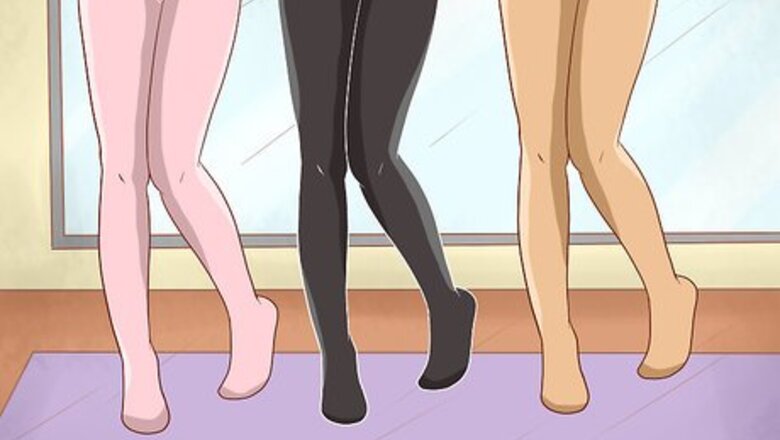
views
Wearing the Right Outfit for Women
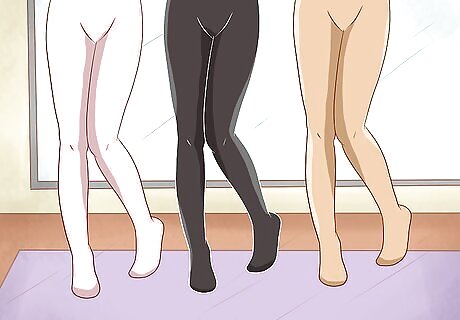
Buy at least one pair of tights. Pink tights are most commonly required, but sometimes studios will want black or tan tights.They come in footed, footless, and convertible styles, and run about $8 to $20 a pair. Footless tights are not usually the best for ballet since ballet shoes can get sweaty and uncomfortable if you’re wearing them over bare feet, so go for footed or convertible styles first. If you are doing pointe work, you will want convertible tights. This will make it easier to put on toe pads if you put them inside your tights.
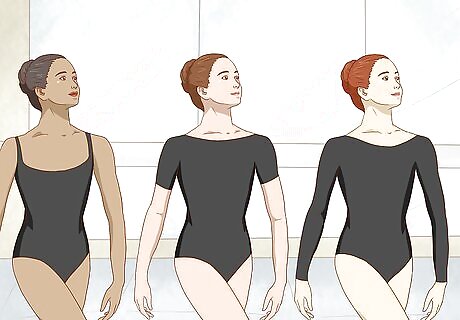
Buy a comfortable, solid-color leotard. Choose a simple black leotard with a waistband—this is always a safe bet. However, studios sometimes allow colored leotards for advanced classes. Leotards come in camisole, tank, halter, short-sleeve, ¾-sleeve, or full-sleeve styles, so choose the style that is acceptable at your studio and the most comfortable for you. Wear a crossover cardigan over your leotard if you think you'll get cold. Only wear a full bra under your leotard if you need a high level of support. Leotards will usually come with a shelf-style bra built in. If your leotard doesn't have a shelf bra, wear a discreet sports bra. If you're thinking about wearing a leotard with flashy decorations like sequins, rhinestones, or large bows, it might not be appropriate for the atmosphere of a ballet class.

Wear a sheer wrap skirt or booty shorts. While these items are not usually required, you may feel more comfortable with more coverage around your midsection. Only use sheer black ballet skirts for ballet; do not use skater, pleated, or other styles of skirts. Tie a wrap skirt by first holding it behind your back outstretched at waist-level. Fold the left hand over your stomach, and pinch the left ribbon against the skirt with your right hand as you transfer your left hand to the other ribbon. Use your left hand to bring the second ribbon around to the back, and tie the two ribbons in the back with a tight bow.

Tie your hair into a bun. Pull your hair back into a neat high ponytail, then twist the hair and coil it around the elastic. Add bobby pins until the bun is secure. Use hairspray or small clips if you have any flyaway hairs. If your hair is too short for a bun, clip back any hair that may fall in your face. If you have questions about hair, you can ask your studio's instructor. Bun helpers can help if your hair is layered or difficult to pin. It is a doughnut-shaped piece of mesh that you put your ponytail through and then use pins to secure the hair around the bun helper. Leave the heavy accessories like barrettes, alligator clips, and headbands at home. You need to move quickly when you dance, and metal or plastic can slow you down or go flying across the room, possibly damaging the floor.
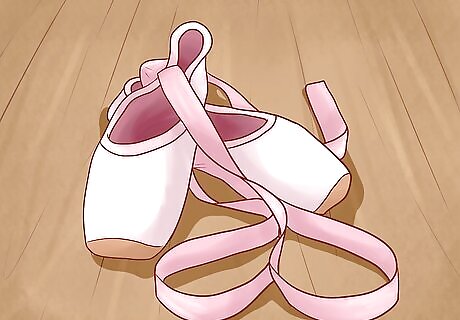
Purchase soft pink ballet shoes. Ballet shoes come in leather or canvas styles. While leather is more durable and has more traction on the floor, canvas shoes are less hot and more flexible. Shoes may also have a whole sole with one solid piece of suede on the bottom or split soles with two smaller pieces of suede, one on the toe and one on the heel. Soft shoes will usually cost around $20-30, and popular brands include Sansha, Bloch, American Ballet Theatre, Grishko, and Capezio. Choose the style of shoe that is the most comfortable for you. Pink is the most common color for dance shoes, but your instructor may also approve of shoes that are the same color as your ballet tights. Don’t buy ballet shoes online before trying them on first. It's best to have your first pair fitted at a ballet shop by a professional.
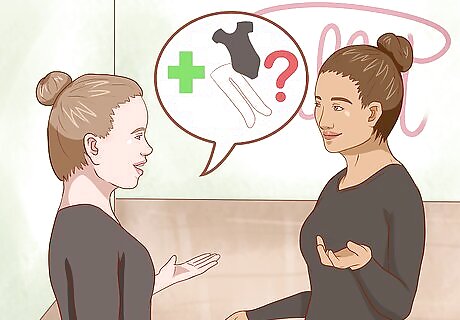
Ask about additional uniform pieces. Some studios have students wear socks instead of tights or a colored hip-alignment belt to differentiate between levels. If your studio requires special pieces that cannot be purchased at a regular dance store, they will supply those for you to purchase.
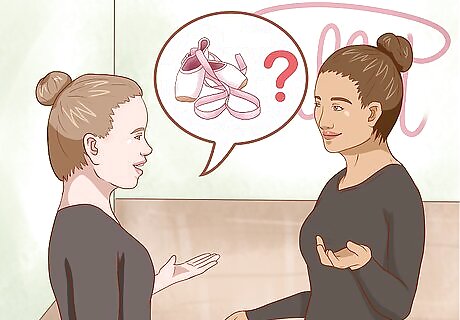
Schedule a pointe shoe fitting if your instructor has approved it. Ask your teacher to come with you to the fitting of your pointe shoes. They will tell you what they want in a shoe, and can help you choose which brand and style is best for your feet. Do not, under any circumstances, buy or wear pointe shoes before your director says it’s okay. These are quite dangerous if used improperly, and you could badly injure yourself if you don’t have the strength to dance in the shoe safely.
Dressing for Ballet Class as a Man
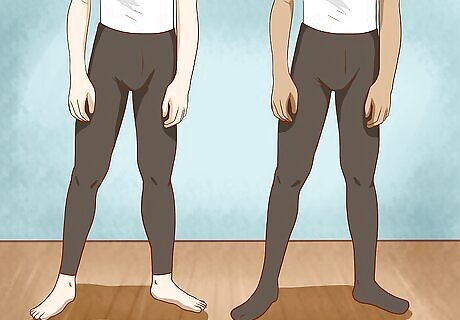
Wear black footed or footless tights. Women and men have different dress codes for ballet class, but everyone needs to wear form-fitting clothing so that the instructor can properly teach posture and alignment. While women usually wear pink tights, men wear black (or sometimes white for advanced classes). Wear supportive underwear or a dance belt (a kind of smooth jock-strap) under your tights. Some studios might allow you to wear black fitted shorts instead of full-length tights. Check your studio’s dress code before wearing shorts to class.
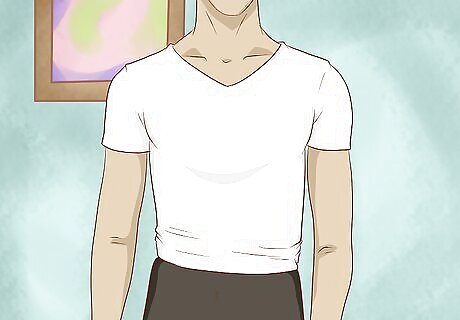
Put on a fitted white t-shirt. Make sure that it is form-fitting, in good condition (no holes or stains), and long enough to cover the stomach but short enough to leave your bottom visible.
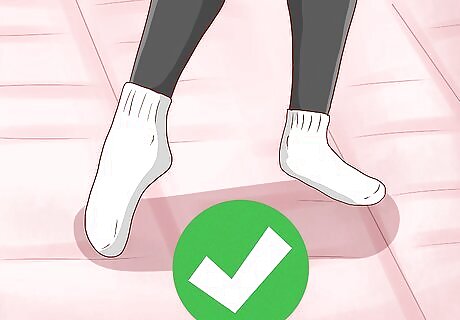
Wear white crew or ankle socks. While they may clash with your black tights and shoes, tight white socks are the best for dance class as your ankle positioning will be more visible to your teacher.
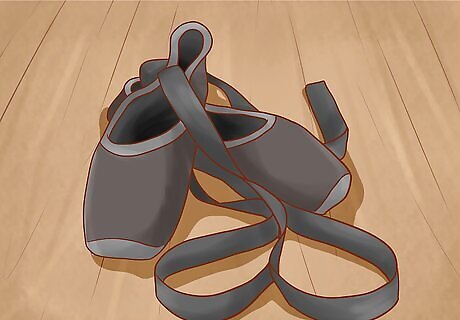
Use black ballet shoes. Ballet shoes come in leather or canvas, and run about $20-35. Leather lasts longer and can grip the floor better, but canvas is less hot and easier to move in. Shoes also have a whole sole with one solid piece of suede on the bottom, or split soles with two smaller pieces of suede, one on the toe and one on the heel. Try on shoes before buying them, since a shoe might feel different from how it looks.














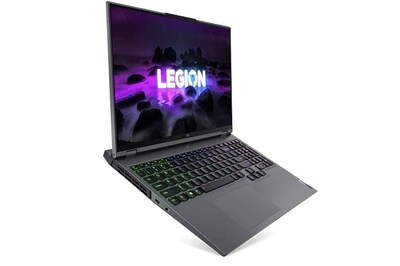



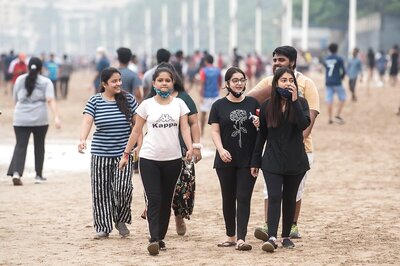

Comments
0 comment